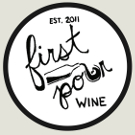While most of Spain’s wine history has been unsettled, the country is one of the most prominent wine producers in the world, hiding many old world values at great prices. Among the many areas of Spain that stand out, both Ribera del Duero and Rioja are renown for the reds. While Ribera del Duero features the quality distinction of Denominación de Origen (D.O.), Rioja is classified as a Denominación de Origen Calificada (DOCa/DOQ) featuring a proven track record of exceptional wines.
Ribera del Duero
Located on the elevated Iberian peninsula in Spain, Ribera del Duero known for it’s rocky landscape and climate of extremes. More inland than Rioja, the summers and winters lack the tempering influence of the bay to the north. As a result, the vines and grapes experience temperature fluctuations from freezing to well over 100 degrees. Most wines come primarily from tinto fino, a unique clone of tempranillo that primarily resides in the area.
Wines from Ribera del Duero are almost always red, but whites do exist. While tinto fino is the primary varietal, it is also occasionally complimented by cabernet sauvignon, merlot, or malbec, although 100% tinto fino is relatively common.
Rioja Somewhat mitigated by the ocean’s cooling breeze, Rioja is very similar to it’s neighbor Ribera del Duero in that it favors reds heavily. Similarly, it favors straight tempranillo, but it also frequently blends in garnacha (the Spanish name for Grenache). Among the few whites the region produces, Viura is the primary grape, but is complimented by grenache blanc and malvasia. One of the more curious stipulations of this area, is that grapes used must be 200% of the value of all the other grapes in Spain.
Influences of Oaking and What Crianza Means to You
Both Ribera del Duero and Rioja are known for their aged red wines. For a time, many wines were almost entirely overwhelmed by the amount of oak used in these area, losing almost all fruitiness. While this practice diminished, and was tempered going into the 90s, many of the regulations for certain statuses do require these wines to have a significant amount of oak, and those are indicated to some extent by the labeling. The breakdown of labels has three main classifications, Crianza, Reserva, and Gran Reserva, each with it’s own legal restrictions for release and earning the label from the Spanish government. There is another restriction as well, the fair less common, Joven, meaning “Young Wine”. Below is a chart demonstrating the requirements the Spanish government has for release in Ribera del Duero and Rioja:
| Label | Red Age | White / Rose Age |
| Joven / Sin Crianza | No requirement | No requirement |
| Crianza | Minimum 2 years, with at least 6 months oak | Minimum 1 year, with at least 6 months oak |
| Reserva | Minimum 3 years, with at least 1 years oak | Minimum 2 years, with at least 6 months oak |
| Gran Reserva | Minimum 5 years, with at least 18 months in oak, and 36 months in bottle. | Minimum 4 years, with at least 6 months in oak. |
Bare in mind, some of these wines can be very oak heavy as these are minimums. Additionally, oak can impart tannin, so expect some additional mouth drying character to potentially come into play.
For this episode, we have representatives for both areas:
Rioja: 2008 Castillo Calvijo Crianza
Ribera del Duero: 2010 Vecordia Joven
